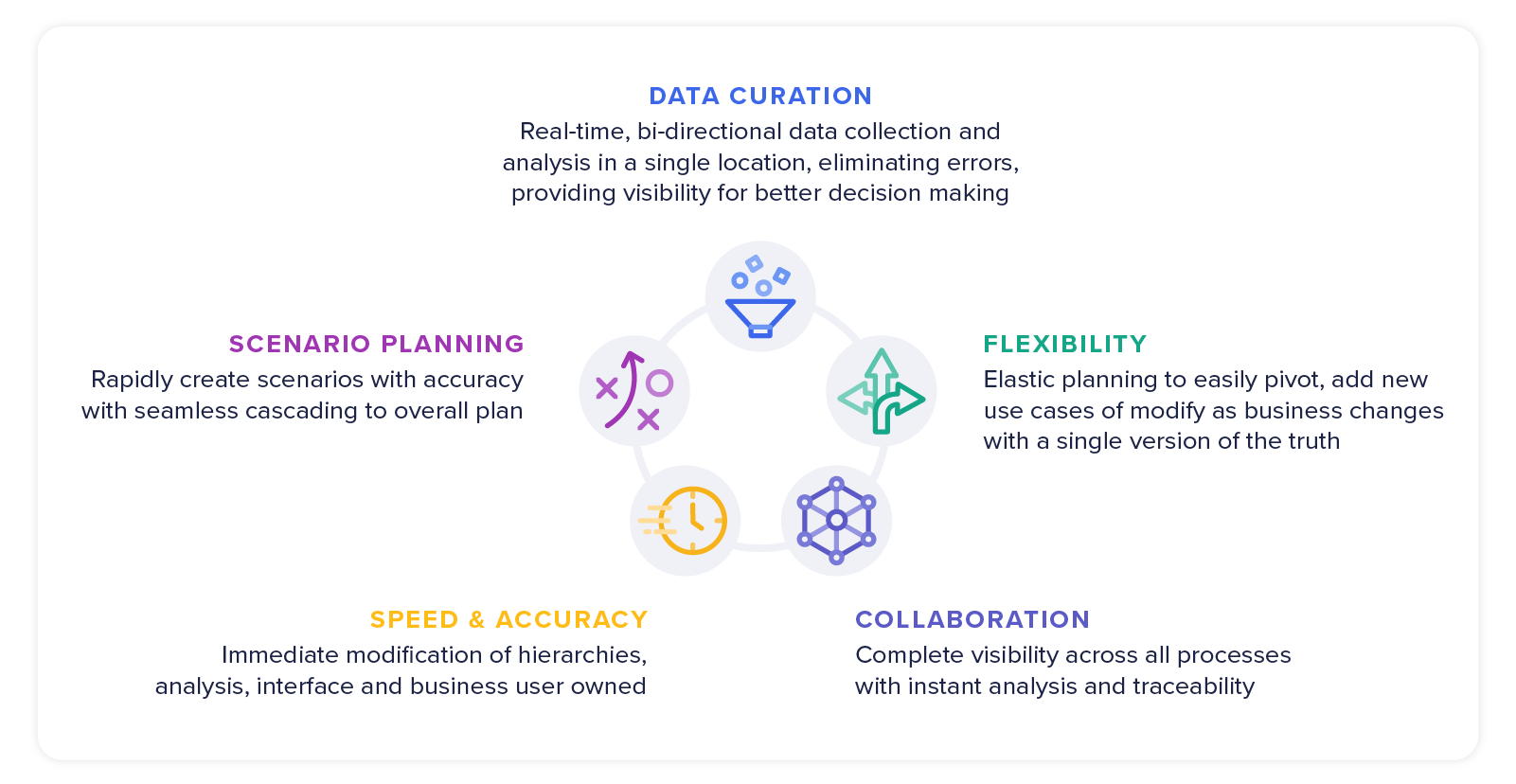Retailers have been put to the test when it comes to navigating change and disruption.
Inflation has driven retail’s cost of goods, wages, and logistics higher – while pushing their customers to exercise caution when it comes to buying non-essentials. And rising costs mixed with a cautious consumer spell disaster for retail margins. Add the unpredictable and erratic issues with demand and inventory–also a nightmare for costs and margins, the rapid shift in consumer behaviors–hello online shopping, and the shortage of qualified talent, and it’s no wonder retailers have struggled to turn their numbers around.
During a recent live webinar hosted by Anaplan, I had the pleasure of chatting with guest speaker George Lawrie, Vice President and Principal Analyst of Supply Chain at Forrester Research, about the complex challenges impacting today’s retailers. We discussed the planning roadblocks that continue to hold some retailers back in this dynamic environment – especially when it comes to merchandise planning – and the steps retailers can take to overcome these roadblocks today.
Here are my two main takeaways from that insightful exchange.
First, time is a precious commodity.
Retailers are in the business of meeting demand in the most profitable way – unfortunately, they often spend an inordinate amount of time stuck in planning cycles. That’s likely because they are using antiquated tools to pull together different parts of a single strategy or parsing together data from hundreds of Excel spreadsheets to inform their plans.
But demand has a shelf life, and a retailer’s ability to meet that demand at the right time, with the right product, and at the right price, is critical to driving profits.
Just think of the impact social media apps like Instagram, YouTube, and TikTok have had on demand cycles. If a post featuring a retailer’s product starts to pick up steam, that product could go viral in a matter of hours. The hashtag “TikTokMadeMeBuyIt” has more than 57 billion views on the app alone and brands like Stanley – which had a 150,000-person waitlist for a water bottle that went viral last summer – can attest to how quickly demand can skyrocket.
In this era of product virality and rapidly evolving consumer behaviors, retailers simply don’t have the time to draw out the planning process. They need the ability to easily pivot to new use cases, plan with new inputs, and make real-time decisions to capitalize on demand signals.
As George noted, “Lead time and availability are significant elements of customer experience, and against the backdrop of today’s economic environment, customer loyalty is more important than ever. Customers and regulators care about continuity of supply, which means retailers need to keep pace with change. That means moving from sequential, seasonal planning to a more continuous, customer-driven approach.”
Second, you don’t have to sacrifice accuracy for the sake of speed.
We talk a lot about speed when we talk about the retail landscape today, whether that’s the speed of the market, the speed of the supply chain, or the speed of demand cycles and buying patterns. And while this means there is a shorter window in which retailers can react, it’s important to note that accuracy and efficiency can actually go hand-in-hand.
That’s where digitization becomes so important.
Digital tools that enable real-time data collection and ‘what-if’ scenario modeling can help retailers assess, analyze, and leverage large volumes of data quickly, and accurately, in order to make strategic planning decisions. Retailers can leverage these tools to automatically compare historical sales data with real-time demand signals–from market trends to social media data–generate precise demand forecasts, then use those forecasts to inform key supply chain decisions. And because data is stored in a single cloud-native environment–as opposed to across hundreds of spreadsheets–planners can work in lockstep with cross-functional teams, as well as with external partners. Finally, retailers have the flexibility to quickly roll out data-driven models that test out various decisions around pricing, assortment, or replenishment. Leaders can get a sense of the impact a certain decision might have on the business's bottom line, cascade that decision down to the right teams and partners, then modify and adjust as needed to keep the business on track.
So while it may seem like things are moving at an unprecedented pace, with the right combination of digital capabilities, it is possible for retailers to strike a balance between speed and accuracy, which will allow them to respond swiftly to market demands while minimizing errors and optimizing their merchandise planning efforts.
The retail landscape has always been thorny, but with disruption now hiding around every corner, it’s not surprising that maintaining margins has become even more difficult than before. Retailers need to think differently in order to chart a path to success – and being more effective with the use of their time, resources, and data, is a critical first step.


